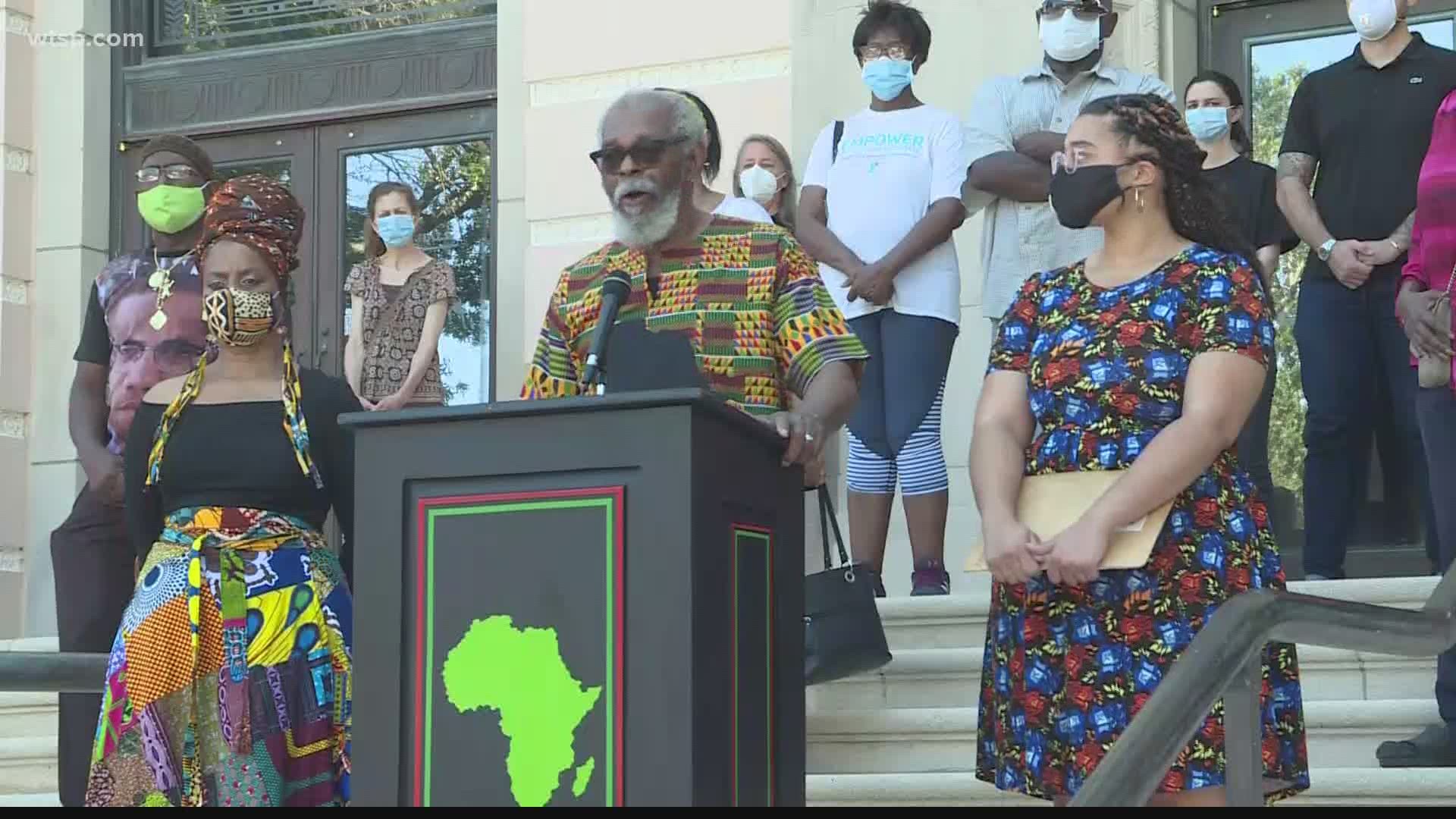ST. PETERSBURG, Fla. — As we address racism in our country, state and our region, the city of St. Petersburg is about to heal a wound that dates back more than five decades.
It involves a wall inside St Petersburg City Hall and why – for more than five decades – its quiet emptiness has spoken volumes for those who know its history.
If you’ve ever stepped inside City Hall, you know there’s a blank section of wall where a racially offensive mural once hung between 1945 and 1966.
“The mural was taken down from that wall some years ago,” said Omali Yeshitela, founder of the Uhuru Movement.
According to the city, in 1942 a local artist was commissioned under a federal art project to create a mural of two canvases, 7 by 10 feet each, to hang over the middle landing of the grand staircase inside City Hall. The murals illustrated early scenes of the city and Pass-a-Grille, showing African American "minstrels" playing for white people on the beach.
Yeshitela knows the mural’s history all too well.
In 1966, before changing his name from Joe Waller, Yeshitela was the person who tore down the controversial mural, which depicted Black musicians entertaining white beachgoers in Pass-a-Grille.
In December 1966, Yeshitela, then Waller, was the vice-chairman of the Florida chapter of the Student Nonviolent Coordinating Committee, which sent a letter to the city to remove the mural. When that request was ignored, Waller and 10 others "participated in the historic action" of tearing down the mural.
According to the city, Yeshitela was arrested for tearing down the mural but his action helped ignite what became St. Petersburg’s civil rights movement.
“We are going to be doing a press conference to deal with that question,” said Yeshitela, referring to a decision earlier this week from the city’s community planning and preservation commission.
The panel unanimously approved mounting a plaque on the bare wall where the controversial mural once sat, acknowledging its historical significance.
The plaque reads, in part: "This wall shall forever remain blank in recognition of this act and in tribute to the countless contributions our African American residents have made to the City of St. Petersburg."
A statement sent to 10 Tampa Bay accuses the city of trying to “rewrite history." The plaque reportedly contains the name Joe Waller, which Yeshitela gave up decades ago.
Yeshitela returned to the steps of City Hall on Monday to address the city's plans for the plaque.
"We were not marching for a plaque," Yeshitela said about the civil rights movement in the city. "We were marching for a change, improvement in the conditions of our people and for the Black community to have some power over our destiny."
Yeshitela said he wants the people arrested with him the day he tore down the mural to be named on the plaque as well.
The city of St. Petersburg said it has no further comment on the installation of the plaque.
Demonstrators, who’ve been protesting these past two weeks in front of City Hall, hope the plaque will be more than a catalyst for conflict.
Not just a historical marker, either. But a long-overdue step toward healing.
“City Hall is really just symbolic, it’s a good place to start,” said demonstrator Denzel Johnson-Green.
“I think there should be something that’s like inclusive and more diverse,” added Leighann Gross.
“If we keep coming together, if this gets bigger, it will happen. Sooner than later,” said Kia Boykins.
- Pulse 4 years later: Remembering the lives lost and changed forever after nightclub shooting
- Florida breaks record for single-day spike with 1,902 new coronavirus cases
- Alligator in road caused deadly Manatee County crash, troopers say
- Jacksonville to host major parts of 2020 Republican National Convention
- FWC looks to research Eastern indigo snake
FREE 10 TAMPA BAY APP:
►Stay In the Know! Sign up now for the Brightside Blend Newsletter



